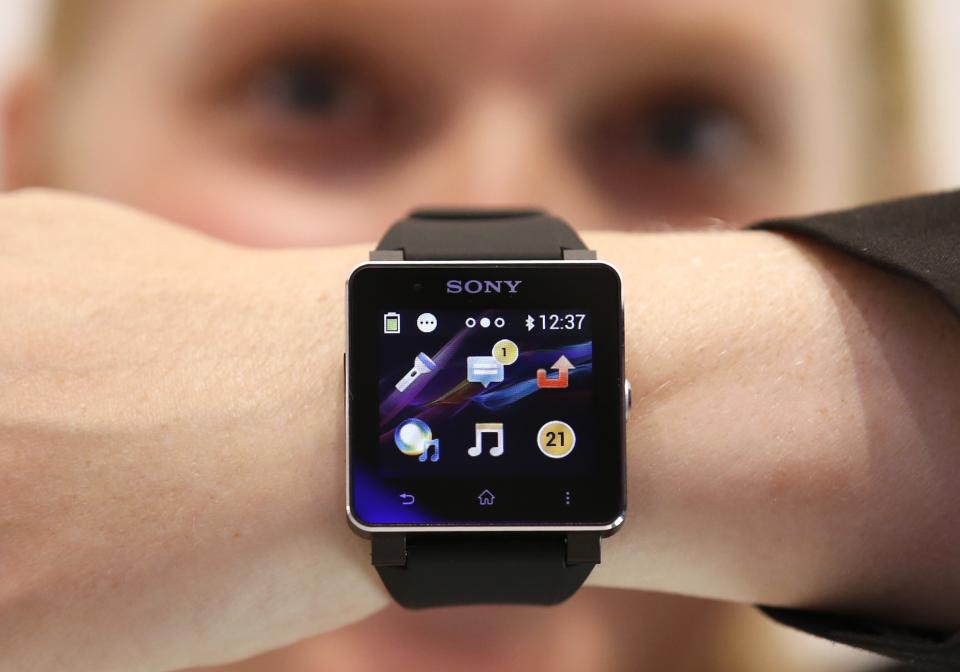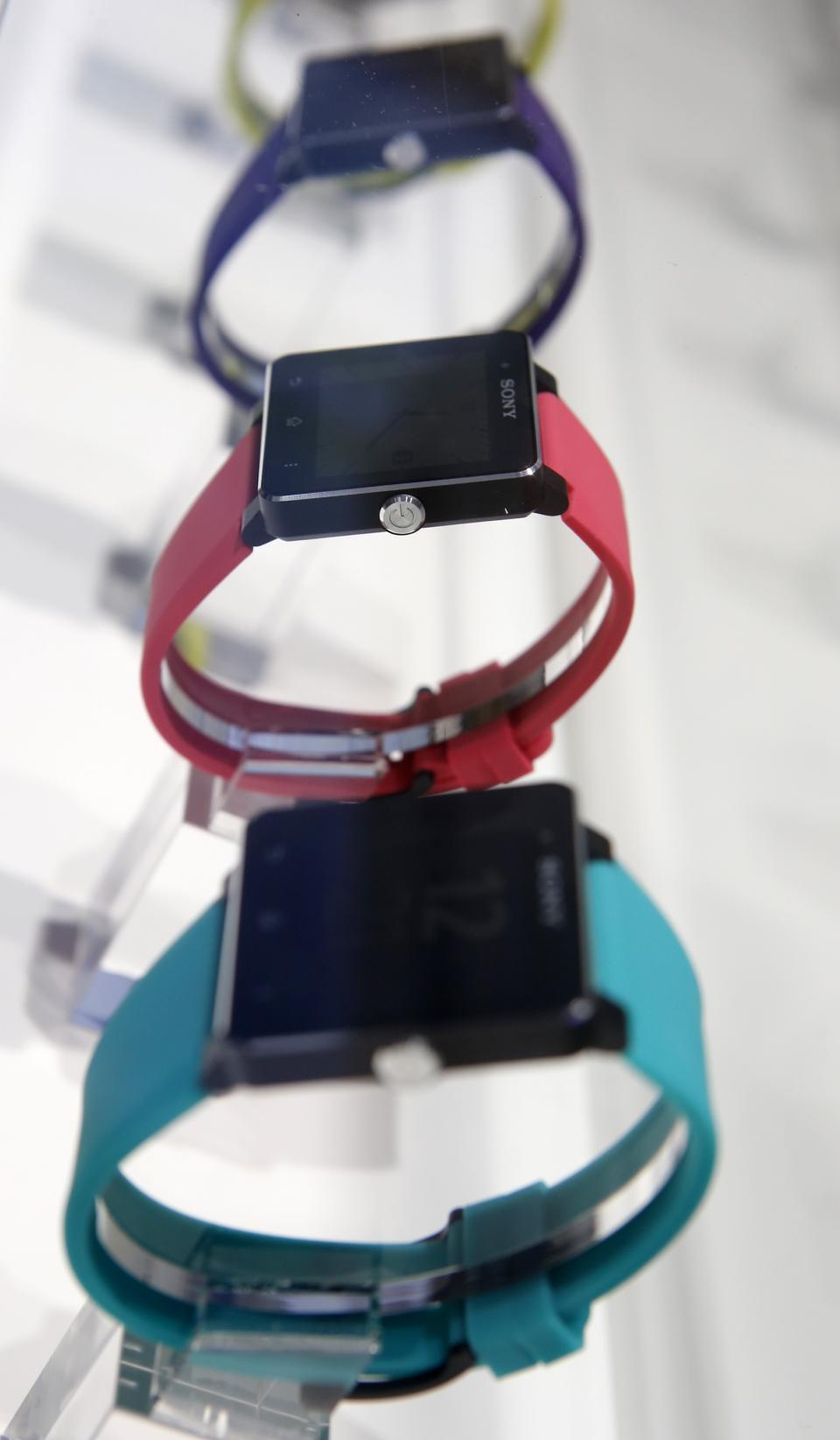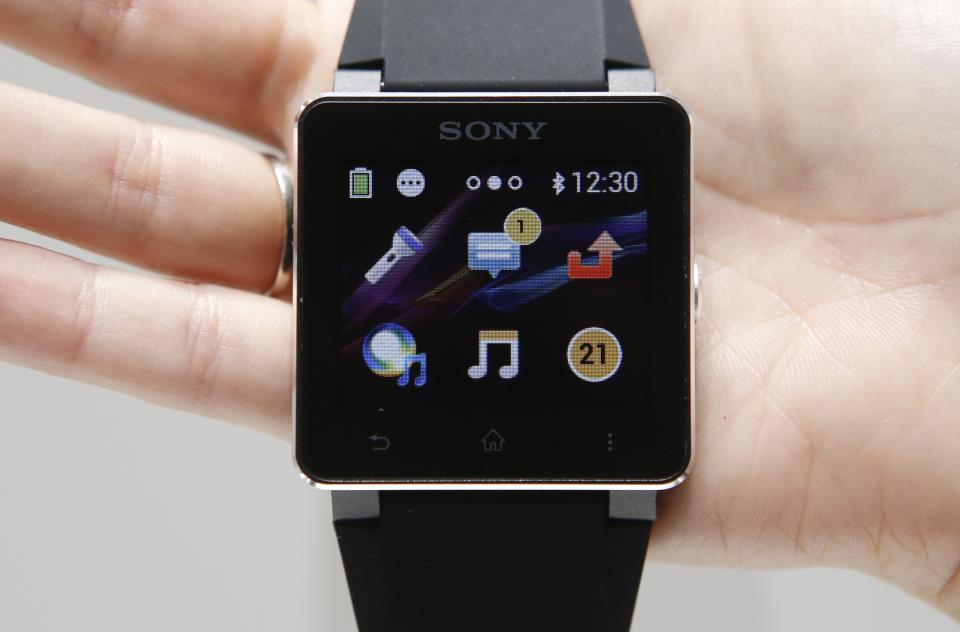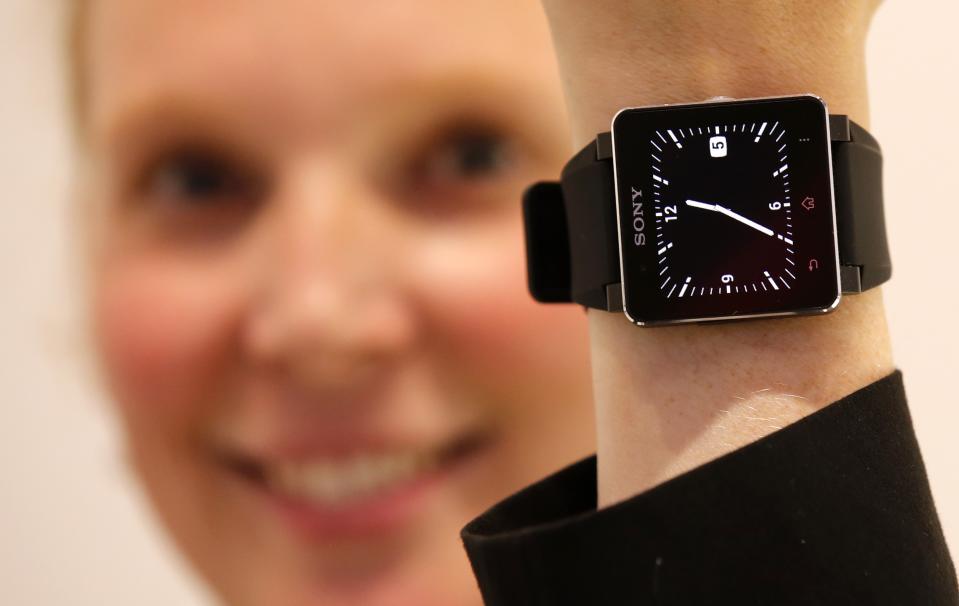Smartwatch Season? Samsung, Sony and Qualcomm all debuted computerized watches this week
On Wednesday, Samsung unveiled a new smartwatch called the Galaxy Gear, and the tech press became obsessed. Hundreds of stories were written, and the instant reaction pieces, quick takes and criticisms piled up.
Samsung wasn’t the only company to release a computerized wristwatch this week, however. Far from it.
In the past few days, we’ve watched — er, seen — the wearable wrist-gadget market receive a substantial refresh, as Samsung, Sony and chipmaker Qualcomm all debuted new smartwatches. Let’s take a look at the defining features each one boasts.
The “largest splash” award would have to go to Samsung, as the company debuted its new Galaxy Gear smartwatch beside the announcement of the Galaxy Note 3 Wednesday at it’s lavish Unpacked event in Berlin. The event featured a live orchestra, a master of ceremonies and some fairly theatrical presentations; but does this make the Gear the best smartwatch to launch this week?
The 1.63” Super AMOLED touchscreen on the Gear is a first of its kind, and Samsung has packed the device with an 800 MHz Exynos processor, likely making it the speediest smartwatch, too. Add the forward facing camera capable of capturing high quality stills and 720p video, and S Voice hands free calling and device navigation, and the Gear easily takes the cake for the most feature packed large launch smartwatch available. Samsung has also announced that, by the watch’s early October launch, Gear will offer over 70 apps, all at entering price of $299.
Samsung’s Galaxy Gear has brought some bold smartphone-native features to the category of smartwatches. Being the first mainstream smartwatch with a camera and speakerphone should pique the interest of some users, though the additions do add some bulk to the band of the watch and nix the idea of ever swapping it out for customization. (Click here for some hands-on impressions of the Samsung Galaxy Gear.)
Sony’s SmartWatch 2, meanwhile, has the advantage of experience: It is the only sequel of a smartwatch launched this week and has been painted as one of the likeliest competitors to the Gear. More than Qualcomm’s Toq, the SmartWatch 2’s functions, feel and features — a slight bump-up from Sony’s initial SmartWatch release last year — more closely match the Gear, though the Smartwatch 2 lacks a camera, microphone, speakers or gyroscope/accelerometer functionality.
The SmartWatch 2, like the Gear, does have a 1.6” color touchscreen watch face, and though its LCD technology does less to conserve battery than the Gear’s Super AMOLED, TechCrunch reports that Sony is rather vaguely claiming to have the watch with the “longest battery life among smartwatches.” The Gear, according to Samsung, should see battery life of “about a day.”

One advantage Sony’s SmartWatch may have over the Gear is the device’s compatibility with ANY Android 4.0 smartphone. Samsung’s Galaxy Gear requires that it be paired to a Samsung Galaxy device (Galaxy S smartphones or Galaxy Note Tablets) for messaging, calling and execution of some apps.
Like the Gear, the SmartWatch 2 also ofers an assortment of colored bands, though the base model comes in black and the colored bands are sold as add-ons at €19 each (about $25). The SmartWatch will launch with a price of €179 (about $235) for the black silicon band model and €199 (about $260) for a stainless steel band model. The SmartWatch 2 should be available by the end of September. (Click here for hands-on impressions of the Sony SmartWatch 2.)
Finally, Qualcomm’s Toq is a bit of a different direction for the smartwatch market. According to the Qualcomm executives, the Toq wasn’t even necessarily produced as a mainstream product competitor, rather more of a “hero prototype”, as tech site CNET characterized, to push other device makers and inspire the marketspace in general.
One of the unique features of the Toq is its utilization of a color Mirasol display, similar to the look and feel of the e-ink technology used in many e-readers (as well as the popular Pebble smartwatch) making the watch easy to read in bright sunlight. According CNET’s hands on review of the device, the touch-based Mirasol display is a significant step up from the black and white e-ink display on the Pebble, and even seems to offer a faster refresh rate when switching between screens.
Qualcomm says the Toq “sips power” allowing for longer battery life. Unlike the Gear or SmartWatch 2, the absence of an LCD or Super AMOLED display, coupled with the low power Bluetooth 4.0 and the 200 MHz Cortex mx processor, should allow the Toq to run “a couple of days” on a single charge, according to tech site Geek, who also spent some time with the Toq.
And though users may only be charging their device a few times a week, its also the method of charging that sets the Toq apart from the Gear and the SmartWatch 2. The Toq and the wireless Bluetooth earbuds that Qualcomm has coupled with the watch both charge wirelessly via the company’s WiPower LE technology. The Toq’s carrying case doubles as a charging station for both the watch and earbuds. Qualcomm said the Toq will sell for the Gear’s same price tag of $300, and should also launch in early October. (Click here for hands-on impressions of the Qualcomm Toq.)
Sony hit the streets with its first SmartWatch release early last year, but the temperature of the market spiked considerably in early 2013 when rumors pinned smartphone giants Samsung and Apple to new smartwatch device projects. And while smaller gadget makers like Qualcomm and Pebble have developed fine watches to help spark the wearable device industry, Samsung’s move forward with the Galaxy Gear is sure to serve as a great indication for where the consumer market currently sits.
Of course there's no indication quite yet that the smartwatch can explode into popular consciousness the way the MP3 player and the smartphone have. Smartwatch sales have, indeed, been modest thus far, even with the success of Pebble's Kickstarter campaign
Still, though, we wonder: Will Apple, Google and Microsoft sit back and watch the launch and reception of the Galaxy Gear, Toq and Smartwatch 2 before eventually dipping their own respective wrists in the market? Time will tell: Hope you've got a watch.





